Whereas it is clear that Marquardt’s Phi mask, derived from the golden ratio or divine proportion, is inconsistent with the optimal esthetic preferences of most people on multiple counts, it is necessary to also address issues as in the image below.
Fig. 1. Marquardt’s mask applied on Victor Johnston’s very beautiful face.
The image above appears to show that Marquardt’s mask fits a computer-generated face that was found to be the most attractive based on the input of 10,000 people that Victor S. Johnston had vote. Does Fig. 1 show that Marquardt got it right?
Fig. 1 was forwarded to me by a reader (Lena). I was not able to obtain a larger picture and it would have been preferable if the woman didn’t have hair covering the sides of her face. Anyway, another reader, Bron, sent me the images in Fig. 2.
Fig. 2. The first row shows images from Victor Johnston’s experiments, specifically a plain Jane and a more feminized version of this woman that was rated more attractive by most people. The second row shows what happens when Marquardt’s mask is applied to these images; the mask application was by Bron.
In Fig. 2, the mask appears to fit both faces equally well even though the face on the right was rated more attractive. This is a problem with the mask application as suggested by Marquardt; it isn’t sensitive enough to subtle variations that can have an important effect on attractiveness. Bron also told me that she has applied the mask to many faces and it doesn’t fit many famous faces, including the likes of Marilyn Monroe and Brad Pitt, both considered good looking by a large number of people.
Whereas Marquardt’s mask has been favorably reviewed by many in the cosmetic surgeon community (e.g., Jefferson(1; pdf)) and elsewhere, until recently, there were no formal evaluations of the validity of his claims. Two papers have evaluated the Marquardt Phi mask and reported that there is some validity to his claims. Yong-Ha Kim used the Phi mask to investigate whether it is a useful tool for facial diagnostics among East Asians seeking cosmetic surgery, and found that it was useful.(2; zip) Mounir Bashour investigated whether the degree of fit with Marquardt’s mask was related to attractiveness ratings, and reported that it was in women (explaining about 25% of the variance in their attractiveness ratings), but not so much men.(3; zip)
When Marquardt first made his claims, he argued that his mask applies to both men and women, but recently he has changed his argument. Now he says that his mask applies to women, i.e., the archetype is a female face, and has come up with a male variant of the mask (Fig. 3).
Fig. 3. First row shows the Marquardt aesthetic archetype. Second row shows the male aesthetic variant, derived from the archetype.
Therefore, given that the facial attractiveness of women is related to how well they fit Marquardt’s mask, as reported by Bashour, does it mean that Marquardt’s claims are valid? Bashour even notes that whereas his study could be repeated with a different mask shape and similar results obtained, namely that the extent of conformity with the mask is related to attractiveness, Marquardt’s mask is the first step toward an objective system for measuring attractiveness because of its [assumed] objective and mathematical derivation.
Marquardt instructs that to assess how well a face fits the mask, one should superimpose the mask on the face after equalizing the distance between the eyes and lips (distance between the lip line and the mid-pupil in front view and distance between inferior irion and lips in side view), which is what Kim did for his study.(2) Bashour carried out the superimposition by equalizing the distance between the pupils, which is a common procedure in the scientific literature. Here is a problem with either approach.
The following figure shows Marquardt’s mask and a face. Would it be valid to impose the mask on the face without adjusting the size of either image?
Fig. 4. Marquardt’s mask (left) and a woman’s face (Victoria 4; Daz3D).
The answer to the question immediately preceding Fig. 4 is obviously no because the sizes are clearly different, and there will also be the problem of how to align the images for a proper visual comparison.
Now consider Fig. 5, which shows the face is Fig. 4 with four modifications that keep the size of the face constant in each case; the size here is the area occupied by the face is front view.
Fig. 5. The face in Fig. 4 modified; clockwise from top left: distance between the eyes and lips increased, distance between eyes and lips decreased, distance between pupils decreased, distance between pupils increased.
It should be clear that by changing the distances that Marquardt or Bashour control for, even though the size of the face is kept constant, the degree of fit with Marquardt’s mask changes. Since we are comparing shapes, it is necessary for the forms that are being compared to have the same size, which is well-illustrated by the dramatic illustration in Fig. 4, but Marquardt and Bashour’s methods do not adjust for face size before comparing face shapes.
In real life, even for the same face size, the interpupil distance and eye-lip distances vary across individuals. Therefore, applying the Marquardt Phi mask using the method suggested by Marquardt or Bashour will sometimes make the mask appear valid by roughly fitting some faces rated as attractive by many/most people but at other times not valid by poorly fitting other such faces. Bashour wrote in response to criticism (see zip file above):
I, too, tried to apply Marquardt’s phi mask to sample faces when it first became available and could only find poor correspondence in many cases where the face was clearly attractive. However, the mathematical modeling system I created using the phi mask as a template is in no way the same thing as applying the mask to an individual face and seeing how well it fits. Eyeballing two or even 60 or more individual faces with superimposed masks without attempting mathematical correlations is a futile and useless exercise.
However, Bashour’s mathematical method is faulty since it assesses shape difference without adjusting for size, and it also isn’t able to describe how exactly the more attractive and less attractive faces in his study differed in shape from each other and the mask.
The problem of shape comparison is straightforward: adjust for size prior to comparing shapes at the very least. But how does one do this? Hint: adjusting for face length or face breadth before comparing shapes won't help either. See if you can figure this out. If you can’t, don’t worry, you are in good company. Marquardt, Bashour and Kim are well-educated medical professionals. Bashour and Kim’s papers were reviewed by their professional peers and approved for publication in scientific/medical journals. As Bashour mentioned, the method he employed for face shape comparison, adjusting the distance between the pupils, is commonly employed in the scientific literature. Obviously, many scientists and medical professionals do not have a clue about how to adjust for size prior to comparing shapes. Therefore, if you can’t figure out how to adjust for size, you are in good professional company, too.
Look for the answer in a subsequent entry.
References
- Jefferson, Y., Facial beauty--establishing a universal standard, Int J Orthod Milwaukee, 15, 9 (2004).
- Kim, Y. H., Easy facial analysis using the facial golden mask, J Craniofac Surg, 18, 643 (2007).
- Bashour, M., An objective system for measuring facial attractiveness, Plast Reconstr Surg, 118, 757 (2006).
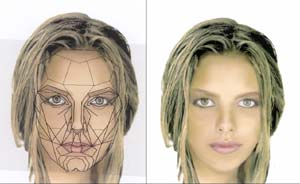
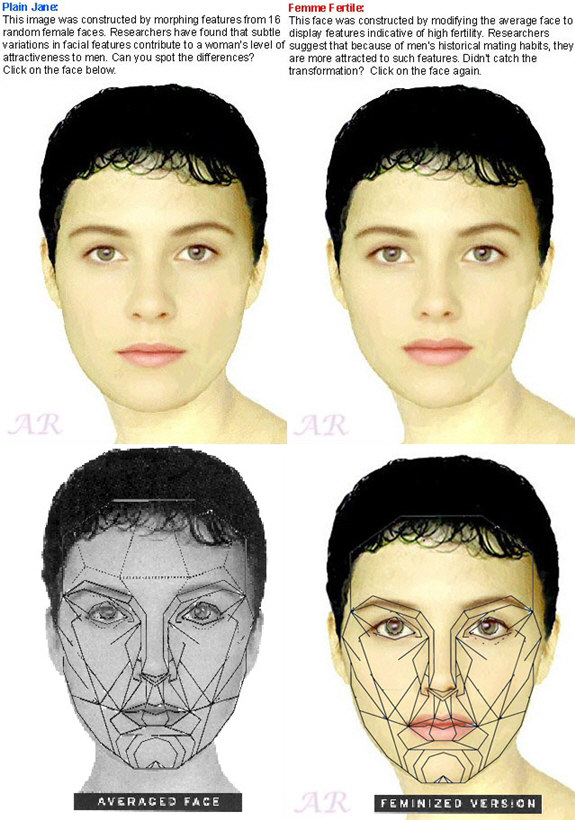
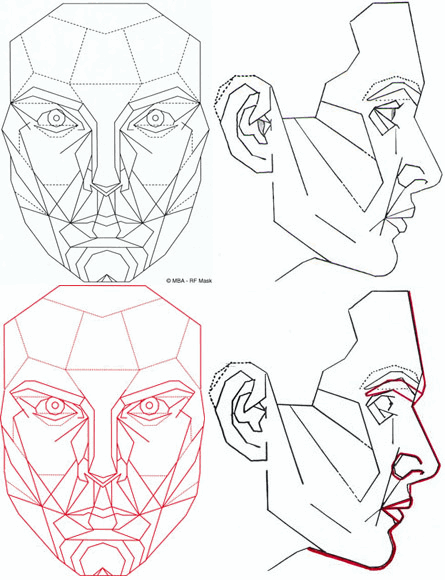
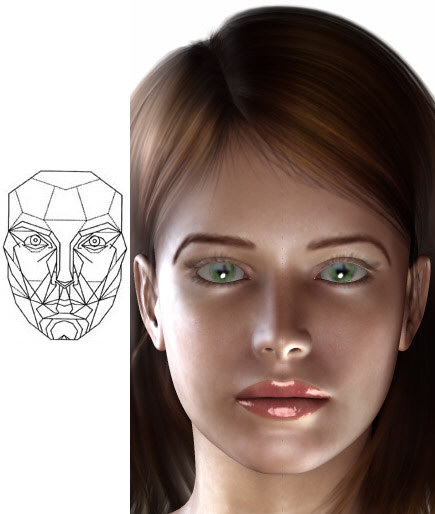
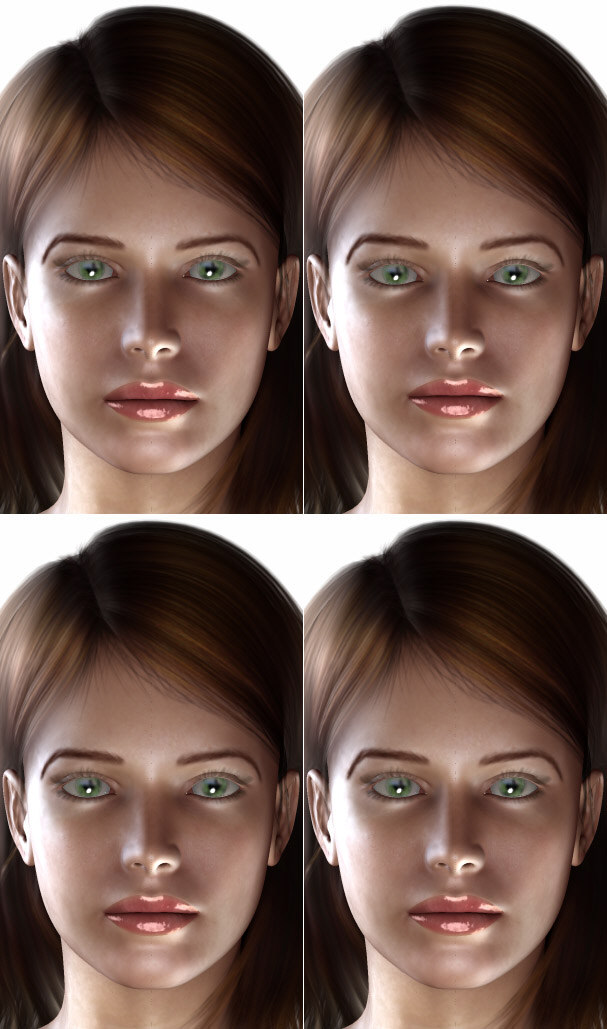
Comments
ur such a pedophile erik
N E WAYZ:
these links r better than ur shit, so no one comes here N E MOAR:
http://mamavision.com/
http://5resolutions.blogspot.com/
and they're not racist, like u. or a pedophile. like u. or a homophobe.
hahah peace kthxbye
Those links are better for morons like you who can't read.
Lousy punctuation + Lousy capitalization = Complete moron
And no, that's not a "rule of thumb"
It's a Law of Nature.
Interesting entry, like usual.
Those who can't tell the difference between the "Plain Jane" and the "Femme Fertile" within 5 seconds,
shouldn't be reading this site.
But there's a problem with the bottom row figures (Fig. 5)
If you combine them crossing your eyes to form a composite image, like when viewing a stereo pair,
her right eye protrudes, but her left eye is sunken. I think one, or both images, are not perfectly symmetrical.
Here's a tutorial for viewing stereo pairs:
http://mypage.iu.edu/~robrown/Crosseye.html
Greets.
8D: Even before I read your comment, I guessed that it would have nothing to do with the article. Stop posting nonsense. Don’t come back to this site if you dislike it. I will address the contents of your linked websites later, in a separate entry. These two sites will not be having as much impact as this site will in the long run since this site nails the problem; it hits the bull’s eye, whereas your cited sites do not have a clue about the source of the problems they are complaining about.
Der Wanderer: Whereas there is some discrepancy in eye projection when one observes the cross-eyed composite, the images have left-right shape symmetry, but not left-right lighting symmetry. Anyway, left-right symmetry is not an issue in Fig. 5 and neither is viewing them cross-eyed.
> [...] the images have left-right shape symmetry, but not left-right lighting symmetry.
Must be something like that casue I opened those images with PhotoShop and they seem to be symmetrical indeed.
I assumed that the lighting conditions remained the same when rendering the models.
Mind this: not only the eyes but even the eye sockets protrude/sink.
> Anyway, left-right symmetry is not an issue in Fig. 5 and neither is viewing them cross-eyed.
Of course not.
That's a little trick I use to spot small differences between almost identical pictures.
It works wonders with those "spot-the-7-differences" kind of games.
Greets.
so does anyone no if the program dr steven marquardt uses to morph and sculpture the faces of anyone photographed "available for download on the net?
Any image editing program will do the job of placing the mask on the face in accordance with Marquardt’s specifications. If you don’t have one, get the open source program GIMP.
You need to scale one of the images so that the distance between eyes and lips (see details above) is the same in both the mask and the target face. Then copy and paste the mask on the face. If you have a mask with a white background, then you will have to erase this white background (make the background transparent).
Hi Eric, the measure of symmetry in faces and how well the phi mask fits a face, is completely different to the degree of feminisation/masculisation of the face. The latter signals the fertility of the man or woman and their hormone levels.
...Although, symmetrical humans are also displaying high reproductive value, (I believe that to divide perfectly, you would have to have had higher ability to fend off disease etc while developing.)so humans also strongly favour symmetrical mates.
Your face can fit the phi mask, but not be super feminine (catwalk models are aethetically very beautiful, but out of place in a men's magazine), and you can have a very feminine face and not fit the mask
You can also be both; Angelina Joile and Jessica Simpson both fit the mask and are very feminine. The two things are seperate IMO.